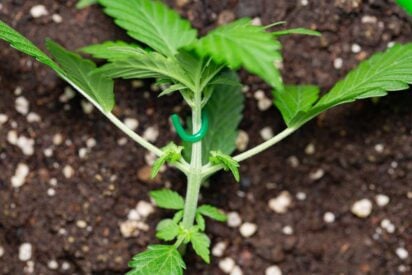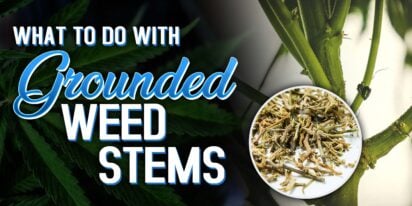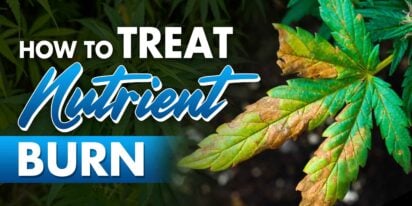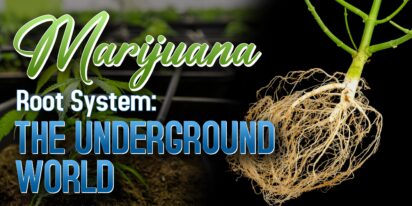
Are You 18 Or Over?
YesOr
No By clicking yes, you certify that you are over 18. By using this website, you agree to our legal disclaimer.605+ Cannabis Strains over 20 Breeders worldwide.
Table of Contents

Life is, indeed, unfair. You may think that the discount item you bought for $10 at the store was cheap, and just a few meters away, a thrift store sells the same item for only $3. I mean, how sad is that? Extremely soul crashing. The same goes for our beloved cannabis plants. One stem will get all the sunlight while others are left lonely in the dark. Luckily, in the gardener’s world, Low-Stress Training exists. What is it exactly? How will it benefit the plant? Isn’t giving stress to the plant bad? You will know all the answers in a few.
Low-Stress Training (LST) simply put into words is to bend and tie the plants in order to train them into a shape that grows more efficiently. It does not involve harming the plant.
Auxin is a plant hormone that dictates a plant’s growth. It is highly concentrated at the top of the plant, and more of the growing focus is upwards through the main stalk. Training techniques are utilized to reduce this focused upward growth and encourage the growth of an even canopy with an increased number of buds instead of one main bud. Overall, low-stress training is a gentle way to make sure all parts of the plant get enough sunlight and for the plant not to get too tall. So, it isn’t bad.
Cannabis connoisseurs most probably know that plants normally develop a few healthier buds toward the top of the plant, with several smaller buds below. The same happens to many other flowers, fruits, and veggies on earth.
Over centuries, propagators have thought of ways to get more out of their plants using simple training techniques. Techniques such as topping and pruning plants, bending, Screen of Green, and all manner of other methods. Although different from each other, each one ensures the best use of space, light, and resources.
The ancient Egyptians are thought to have used low-stress training to horizontally grow fig trees more than 3,000 years ago. A famed method known as espalier was talked about in 17th century Europe. Espaliered hedgerows of fruit trees were a common sight. Aesthetically used in apple and pear orchards, it resulted in beautiful landscapes. Thus, low-stress training is a modern term for an old technique used to force fruiting trees to grow in a flat structure.
Phototropism is a phenomenon known when plant growth responds to light stimulus. The parts of the stem that are bent and now shaded will start to produce more growth hormones called auxins. This increases cell elongation on the sun-deprived side of the plant, with the effect of directing the growing tip towards the light. The lower branches will now be able to take in more energy and light. You can bend the secondary stems once they are formed, giving way to the tertiary stems to receive sunlight. You can now decide to begin flowering, depending on the available surface area and the number of plants being cultivated.
Its only drawback so far is that since the low-stress training is done hands-on and continuously (until no lower buds exist), the grower of a large cannabis garden may be exhausted at the end of the day from all the manual labor he or she will do.
The plant has to establish a strong root system before you can start. The best indicator is to count the nodes of a young plant.
The top of the plant is the main node, and under this, a second and third node will grow. The secondary nodes are developed after the main stem and will always stay behind the main top. Wait for the second node to form, and then you can start the training. Although not advisable, you can also apply LST a few weeks into flowering. Just make sure the stems are still flexible and won’t just snap. The flowering stretch is still considered a part of the vegetative phase, and the plant will still be able to be trained. No low-stress training should be done after this.
Some growers pinch or cut off the tops of their plants before starting low-stress training work. It is not a requirement but can be helpful as doing so can break the apical dominance of the marijuana plant, divides the main cola, and creates a more uniformed base of the plant for easier training.
It is a separate preparatory step and not part of LST. Other plant training methods are often used combined with LST to achieve the optimal results, and topping a young plant is very common to prepare the ground for low-stress training.
The LST method involves bending the plant as it grows and tying the branches down. We will further discuss this on a step by step basis on a later part of the article.
This method involves using a screen to create a ceiling. Instead of tying it down, you wait for the plant to grow through the screen, or you pull them through it. The entire plant is spread out to allow for better light to reach the entire plant. Once the branches begin to make their way through, you simply thrust the branches back down into the screen, weaving the branches around it. You will have a well-supported growing area that will produce more even colas.
You can use a trellis or mesh to separate and support the branches as this is practical and easy on the budget. The trellis is situated horizontally above the plant, and the branches weaved through the holes to hold them in place and shape the plant according to the growers’ needs. Vertically placed, this allows the grower to train the plant in two dimensions and a great way of supporting plants and saving space in the garden.
You can also employ a tubular trellis entirely surrounding the plant. This is a method preferred by outdoor growers in places where plants can grow to truly monstrous proportions, cultivated on soil or in huge pots of 400 gallons or greater capacity and with one or more layers of trellis mesh surrounding the plant to ensure full support for long branches with heavy buds.
You can use small weights to gently and gradually bend branches. This has the same benefits as using a trellis, and at the same time, it strengths the branches and prepares them for the weight of the buds to come. It is particularly useful in outdoor cultivation, where using small weights offers the advantage of allowing plants to move and sway in the wind.
The weights themselves should be small, and not too heavy. You can improvise from many household objects like steel nuts and washers attached by a thread, or old wine bottle corks with a wire pushed through the center and bent to make a hook at each end. Don’t forget to remove the weights as the buds increase in size and weight to avoid breakage.
Carefully feel how flexible the stem or branch is that you want to bend, so you know if you can work with it easily. If there is a tendency to snap, choose another. Visualize the type of shape you would like your plant. If you want, you can also pinch out the top leaves.
Tie the highest branch of the plant around the last internode, the space between the last set of leaves and the second-last set of leaves. It should be at a lower level than the rest of the plant. It is essential that you start low-stress training as soon as possible or when the plant is still young.
Keep all the stems about the same distance from the light. Bend using a twisty tie to secure it gently but firmly in position. Bend it in the direction you want it to go.
Here are some reminders that can help you when it comes to bending the stem:
Continue by organizing your canopy by bending the stems to the right places. You may arrange according to a shape you have in mind.
The branch will begin to grow up again after 24 hours of bending. Under a powerful light, it can take as fast as three hours. It will start low as the rest of the branches. As the secondary branches start to receive more light and grow up, you need to train them as well.
Once your canopy is properly filled and uniform, you can repeat the tying process.
Once your cannabis plants start to flower, they will grow hastily. At this stage, pruning the lower branches that have zero chance of reaching or getting any light is a good idea, it will encourage the plant to be more productive up top where it matters. It also will allow better ventilation for your plants.
Another technique some growers do is to turn the lights off two full days before harvest. The light should not touch the plants at all. This tricks the plant, making it think it’s dying. It will then release all the resin in its system, placing it right onto the buds that have formed. At harvest, you will have beautiful crystallized trichome-rich buds in no time.
Auto-flowering plants depend on age to fully mature and produce buds. Less light or more light does not change its flowering cycle. Because of this, it can reach full maturity within just two or three months.
One thing to keep in mind for auto-flowering plants, they should never be cut. Plants typically need some time to recover an invasive procedure such as cutting, time that auto-flowering plants just don’t have.
Now that you have read upon the stress-free effect your cannabis plant can get from Low-Stress Training; you may start early with a young seedling waiting to be shaped into a perfectly uniformed canopy and with lots of large buds to grow. It’s as easy as bending and then securing the stem to be able to produce crops of higher yields.
I hope this guide was helpful enough for you to realize that when a cannabis grower’s skill gives plants an equal chance of healthier growth, then you can truly say that all is fair in Low-Stress Training.

[ez-toc] In indoor gardening, maintaining an optimal temperature within your grow tent is crucial for the health and productivity of your plant

[ez-toc] Welcome to the delightful world of cannafudge crafting, where sweetness meets sophistication, and cannabis infusion adds a unique twis

[ez-toc] You’ve finished trimming your weed, but what about those leftover stems? Don’t throw them away! These seemingly useless bits can a

Feeling high can be an exhilarating experience, but it's essential to make the most of it by engaging in activities that enhance the sensation a

[ez-toc] Starting with planting cannabis seeds might seem simple, but how deep should cannabis seeds be planted for them to grow well. In this

[ez-toc] In the realm of cultivating cannabis, maximizing growth during the flowering stage is a top priority for growers. While various method

[ez-toc] Nutrient burn is a common issue among plant enthusiasts, often resulting from over-fertilization or improper nutrient application. It

[ez-toc] Welcome to our complete guide to dealing with harmful pathogenic mold in cannabis. For those who grow cannabis, preventing mold is vit

In recent years, there has been speculation about “did Shakespeare smoke weed?” This idea originates from a study by South African anthropol

[ez-toc] Welcome to the hidden world beneath the soil – the inside of the marijuana root system. While the vibrant leaves and resinous flower

Are You 18 Or Over?
YesOr
No By clicking yes, you certify that you are over 18. By using this website, you agree to our legal disclaimer.